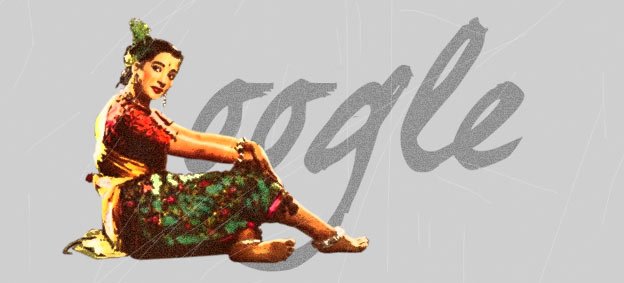At a time when an anglicised creole is the new lingua franca and I am identified and counted as a Bengali, I remain a Sylheti, from Shillong.
Kita re ba? Bhala ni? (Hey! How are you?)
About 13 years ago, in a post on this blog, I lamented the disappearance of the little cultures. Today, I fear for it even more.
I should have been able to write this post in my mother tongue, but I cannot. But why? People who know me would ask. Didn’t you learn Bangla as a subject in school? Yes, I did. For four whole years. Learning the alphabet in Class 5 at Shillong’s BK Bajoria School while envying other classmates who opted for the relatively high-scoring Sanskrit right up to Class 8.
But then Bangla isn’t really my mother tongue. It is Sylheti. A language that is now seen only as a subset of Bangla. A language that is still widely spoken (in parts of Bangladesh and North Eastern India), but very little of it is written. Its script also almost extinct.
The more I am attempting to know the language, the more I am realising the distinctness of it and the more I am fearing for its survival beyond its natural habitat. And because that distinctness of the language cannot quite be expressed in the Bangla script as that is tuned for a different language. So, therefore, am sticking to English (also to be able to reach out to a wider audience).
When I was little, some of us were encouraged to speak in Bangla rather than Sylheti. I could sense that in many Syhleti families around me, Bangla symbolised upward mobility. But then as I grew up my communication automatically shifted to Sylheti as it was the language I was able to express myself better. But then the Sylheti we spoke in Shillong was diluted by the cosmopolitan nature of the hill city. So whenever I went visiting my village in the Karimganj district of Assam, often found it a little difficult to comprehend certain words.
The dominant languages and cultures do not welcome diversity. My Bangla (which again deviates from the ‘standard’ because of the multi-cultural influences of Shillong) is often made fun of by many Bengalis. “What kind of Bangali are you, speaking in this odd way?” they say.
My Hindi, however, didn’t get much Shillongified and has been helpful in my meandering through the Hindi heartland and assimilation with the people here. So much so that I fell in love with and married Varsha, a girl from the heart of Madhya Pradesh.
Now as my son is growing up in a multi-cultural household, what language does he identify himself with? It is Hindi for now. As people around him speak that. Though schools attempt to force parents in conversing with kids in English, we don’t really subscribe to that view and have encouraged Advay (our six-year-old) to communicate with us in whatever language he wants to and we on our part try to expose him to different languages. This does, occasionally, lead to conversations such as:
Varsha: Googool tomar slipper kothay?
Advay (aka Googool): I dhoondchi!
The languages you know, as in my case, are often defined by your needs and desires. In Shillong, you could live a lifetime without even knowing the local language. And because of this, I know very little of the language and now in hindsight, I regret not learning Khasi when I had the chance to.
Growing up in the National Capital Region of Delhi, my son doesn’t really have the need to know a third language beyond Hindi and English. He knows a bit of Bangla. But he is still most comfortable expressing himself in Hindi.
Will he ever know Sylheti? He might. If he wants to.
I have gradually started introducing to him facets of the culture his father grew up in.
It is the diversity of our cultures that makes this part of the world so vibrant. But little (and not so little cultures, such as mine) cultures are disappearing. The dominant culture is slowly assimilating all others in its vicinity (and also beyond). The peculiar lifestyles have adopted a pan-Indian look. Earthy tongues are shrouded into silence in the cities and slowly fading from the countryside with each passing generation.
February 21 is International Mother Language Day. On this day in 1952, four demonstrators were killed in Dhaka (then East Pakistan) protesting against the imposition of Urdu on the Bengali population.
Closer home on May 19, 1961, 11 people were killed in police firing at Silchar Railway Station while they were protesting making Assamese the only official language of a state in which much of the population was non-Assamese. Many were also killed in the anti-Hindi agitations in Tamil Nadu.
Language is an important part of your identity (identity, however, doesn’t necessarily need to have any linguistic or religious ties). Bigger and more powerful identities have been obliterating the ones that do not have their feet firmly on the ground it becomes important to know and understand what is yours.
This doesn’t mean that you close yourself to other languages and cultures and not let them ‘invade’ your senses in any way. I am a beneficiary of this multiculturalism and this has expanded my worldview and given me experiences that I wouldn’t have had otherwise. And a knowledge of my own language and its heritage makes the entire experience more rooted.
At a time when an anglicised creole is the new lingua franca and I am identified and counted as a Bengali, I remain a Sylheti, from Shillong.
(Featured image: The word sylheti written in the endangered Sylheti Nagari script)







One comment
On International Mother Language Day, a note by a Sylheti from Shillong